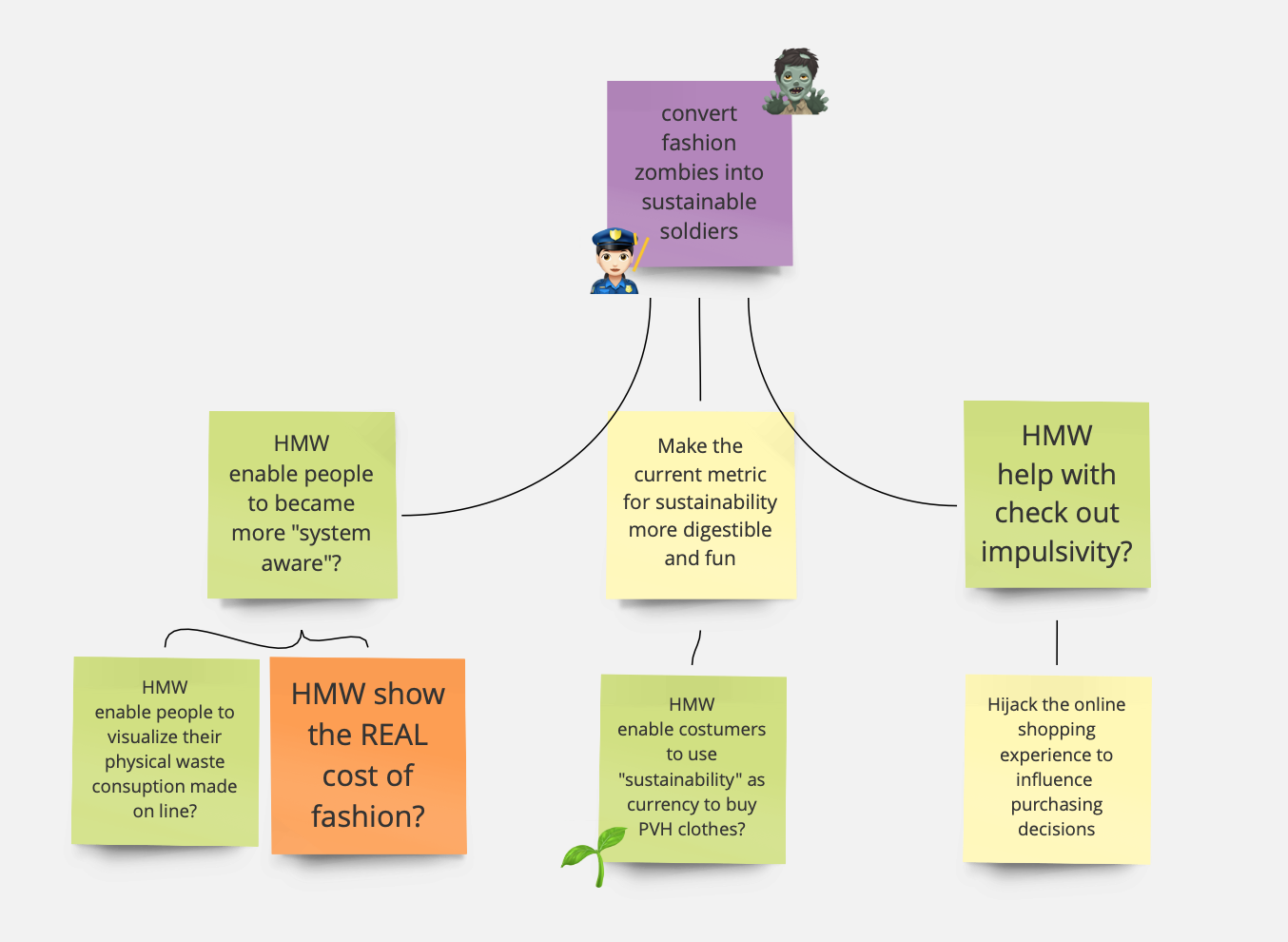Abstract Problem: Defining insights & opportunities
Now that we have gotten an overview of the problem space, it's time to draw conclusions and choose a direction to start designing for. This process of making sense of data is called synthesis.
During synthesis we organise our observations and then come up with insights: "best guesses" towards the overarching systems at play (Kolko, 2011). Arunima Duque provided a good distinction between insights and observations:
Observations are the WHAT. Insights are the WHY.
During the Understanding People course, I created a whole video about synthesis, explaining it further:
What we did
After each research activity we used the IDEO download canvas (Duque, 2020) and defined insights.
Once satisfied, we moved on to define How Might We questions to set our possible design directions, and then used the Opportunity Solution Tree to cluster them. Using Dotmocracy we chose our favourite direction(s).
After three weeks of problem-finding, we had our directions sorted:

Opportunity Solution Tree
Source: (Mosely, 2020; Torres, 2016)
What is it
A way to map out your path ahead and make decisions. Start by spatially arranging opportunities next to each other. Above the opportunities you place the more abstract goal, like a mission statement or desired outcome. Underneath each opportunity you place the concrete solutions to achieve that opportunity.
Reflection
This was a great way to keep ourselves in check: we could easily figure out which How Might We's were concrete solutions in disguise, and how directions related to each other. This made it a lot easier to vote for our winner.
